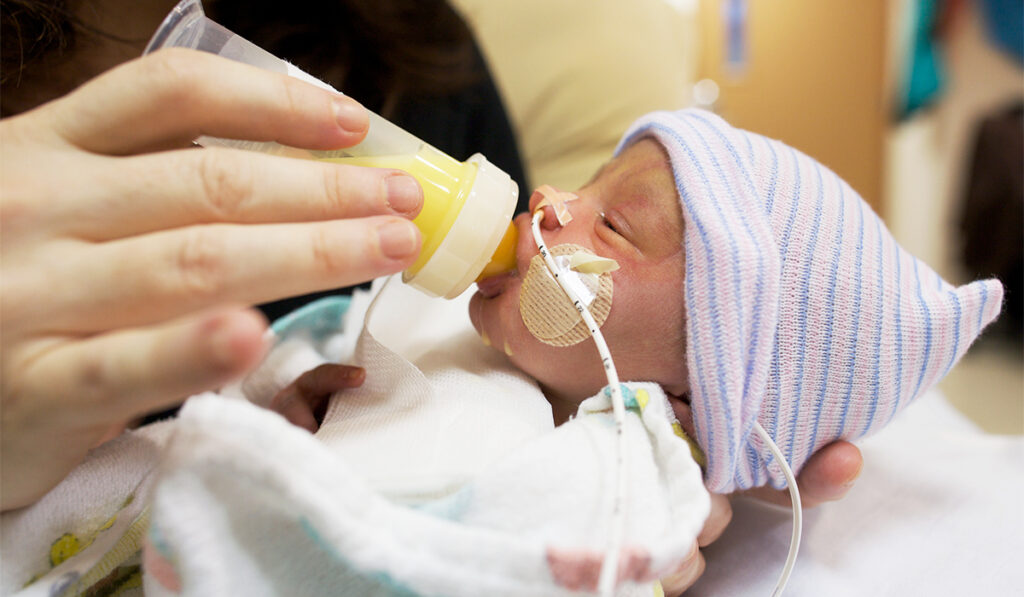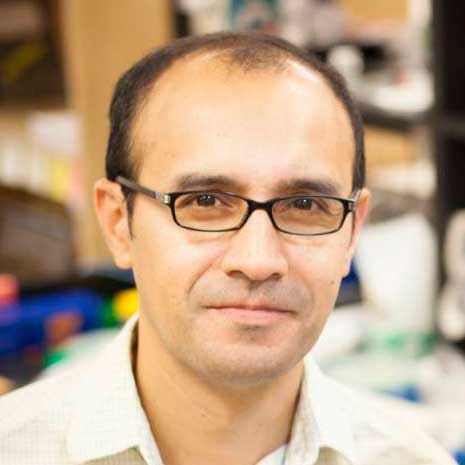Several pasteurized breast milk options have emerged for preterm infants who are unable to adequately breastfeed, however, degradation of the nutritional components in these substitutes is a concern.
Jörn-Hendrik Weitkamp, M.D., director of patient-oriented research in neonatology at Monroe Carell Jr. Children’s Hospital at Vanderbilt, along with Vanderbilt mucosal immunology researchers Danyvid Olivares-Villagómez, Ph.D. and Kathleen McClanahan, led a study of breast milk’s concentration of osteopontin, a bioactive component in whey, following different pasteurization and freezing processes. They published their work in Pediatric Research.
Osteopontin is linked with promoting infants’ healthy intestinal, immunological and neurological development. While conservation of other breast milk components has been studied, this was the first to analyze osteopontin levels.
“Premature infants are at a particularly high risk for numerous developmental problems, from mild delays to brain damage from sepsis and necrotizing enterocolitis,” Weitkamp said.
“Because donor milk is from women who typically had healthy term babies, and donated at a stage when their baby is several months old, this is not optimized nutrition for preterm babies. Yet it is still associated with a lower necrotizing enterocolitis rate compared to exclusive formula feeding, at least until about 34-36 weeks corrected gestational age.”
Study Genesis
The team’s interest in osteopontin derived from Olivares-Villagómez’s discoveries showing that it is an important molecule involved in the homeostasis of mouse and human intraepithelial lymphocytes, key immune cells associated with the intestinal epithelium.
McClanahan, a graduate student at Vanderbilt, studies the role of breastmilk-derived osteopontin in intestinal health, Olivares-Villagómez said.
“She conceived and designed a project to test how pasteurization and freezing impact the levels of this critical milk-derived biofactor,” he added.
Osteopontin’s Role
The gold standard for premature infant nutrition is mother’s own milk, with components that fluctuate to meet the nutritional and immunological needs of the infant. Breast milk contains growth factors; cytokines; live cells; oligosaccharides; and proteins such as IgA, lactoferrin and lysozyme that play an important role in supporting infant immunity.
Osteopontin plays a pleiotropic role in cell adhesion, intestinal epithelial cell development, immune cell modulation, and bone development, among many functions. It also interacts with bacteria, which points to its significance in establishing a healthy intestinal microbiota, the researchers noted.
Denaturation Risks
Infants born preterm, whose mothers often cannot provide enough of their own breast milk, can be fed donor milk through centers like Vanderbilt that work with public or private donor banks.
While pasteurization is required to sterilize donor milk, it makes this an imperfect solution, Olivares-Villagómez said.
By denaturing proteins and changing the composition of sugars and lipids in the milk, pasteurization affects the bioavailability of vital components, including immunoglobulins, enzymes, lysozyme, lactoferrin and more.
Freezing milk is also known to affect milk quality, the researchers say, but to a lesser degree. With this backdrop, the Vanderbilt team hypothesized that degradation of osteopontin would follow the pattern of previously studied bioactive proteins.
Examining Degradation
Olivares-Villagómez and McClanahan measured levels of osteopontin degradation in breast milk that underwent freezing alone, then looked at the impact of the treatment order – whether freezing first, then pasteurizing, or pasteurizing, then freezing made a difference.
In pooled donor samples, freezing alone resulted in an 8-12 percent reduction in osteopontin from the fresh milk baseline. When Holder pasteurization, the traditional method, was applied before freezing, the osteopontin concentration fell by 63 percent.
Importantly, when the researchers reversed the order – freezing then pasteurizing – they found less than half the degradation.
Examining concentrations in breast milk pasteurized with a higher-heat “retort” method that came into use during the pandemic to make a shelf-stable product, the team found osteopontin at concentrations as low as 10 μg/mL – much lower than Holder-pasteurized pooled breastmilk product (52 μg/mL).
“Most milk banks do freeze first, and use the Holder method, but we hope these findings can raise clinicians’ awareness of these advantages when there is a choice of milk-bank products and avoid shelf-stable product when they can,” Weitkamp said.
Other findings include higher osteopontin concentrations in colostrum and transitional milk, which then taper. These are highest in women after the birth of a preterm infant, indicating that this protein may be most critical in a neonate’s earliest weeks, but they also drop more rapidly in the breast milk of preterm mothers compared with full-term mothers.
Toward Feeding Optimization
Weitkamp says this work not only elucidates best practices for donor milk processing, but also supports providing alternative forms of osteopontin supplementation of donor milk for preterm infants.
“Piece by piece, we are working to put together the big picture of how to optimize preterm feeding.”
“Europe has approved bovine-based osteopontin supplementation in infant formulas. The United States could follow suit and supplement formula and donor breast milk products with osteopontin,” Weitkamp said. “In the future, we can expect to see studies assessing the difference this can make in infant health outcomes.”
Currently, the team at Vanderbilt is studying how the intestinal microbiome is affected by the different pasteurization options.
“Piece by piece, we are working to put together the big picture of how to optimize preterm feeding for healthier babies,” Weitkamp said.







